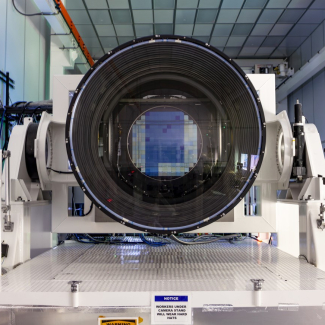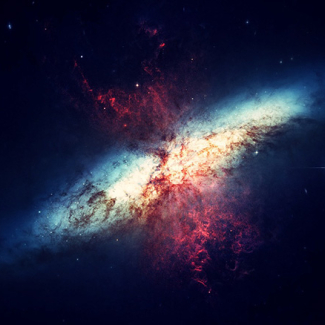
Earth’s water was around before Earth
To understand how life emerged, scientists investigate the chemistry of carbon and water. In the case of water, they track the various forms, or isotopes, of its constituent hydrogen and oxygen atoms over the history of the universe, like a giant treasure hunt. Researchers from the CNRS, Paris-Saclay University, the French Alternative Energies and Atomic Energy Commission (CEA), and the University of Pau and the Pays de l’Adour (UPPA),1 with support from the Muséum National d’Histoire Naturelle (MNHN), have followed the trail of the isotopic composition of water back to the start of the solar system, in the inner regions where Earth and the other terrestrial planets were formed. They did this by analysing one of the oldest meteorites of our solar system, using an innovative method developed just for their study. Their data show that two gas reservoirs existed during the first 200,000 years of our solar system, even before the formation of the earliest planetary embryos. One of these reservoirs consisted of the solar gas in which all the matter of our solar system originated. With the meteorite, the scientists were able to measure its record directly for the first time ever. The second gas reservoir was enriched in water vapour and already had the isotopic signature of terrestrial water. It was created by a massive influx of interstellar water in the hot internal regions of the solar system, upon the collapse of the interstellar envelope and the formation of the protoplanetary disc. The early existence of this gas with Earth-like isotopic composition implies that Earth’s water was there before the accretion of the first constituent blocks of our planet. These findings2 are published in Nature Astronomy (3 February 2022).
Determination of the initial hydrogen isotopic composition of the solar system. J. Aléon, D. Lévy, A. Aléon-Toppani, H. Bureau, H. Khodja and F. Brisset. Nature Astronomy, 3 february 2022. DOI : 10.1038/s41550-021-01595-7.
https://www.nature.com/articles/s41550-021-01595-7
Contact
Notes
- The scientists hail from the Institut de Minéralogie, de Physique des Matériaux et de Cosmochimie (CNRS / MNHN / Sorbonne University), the Institut d’Astrophysique Spatiale (CNRS / Paris-Saclay University), the Nanosciences et Innovation pour les Matériaux, la Biomédecine et l'Énergie research unit (CNRS / CEA), the Institut de Chimie Moléculaire et des Matériaux d’Orsay (CNRS / Paris-Saclay University), and the Laboratory of Complex Fluids and Their Reservoirs (CNRS / UPPA / Total).
- Obtained thanks to hydrogen isotope measurements carried out on the NanoSIMS instrument of the company Cameca.


